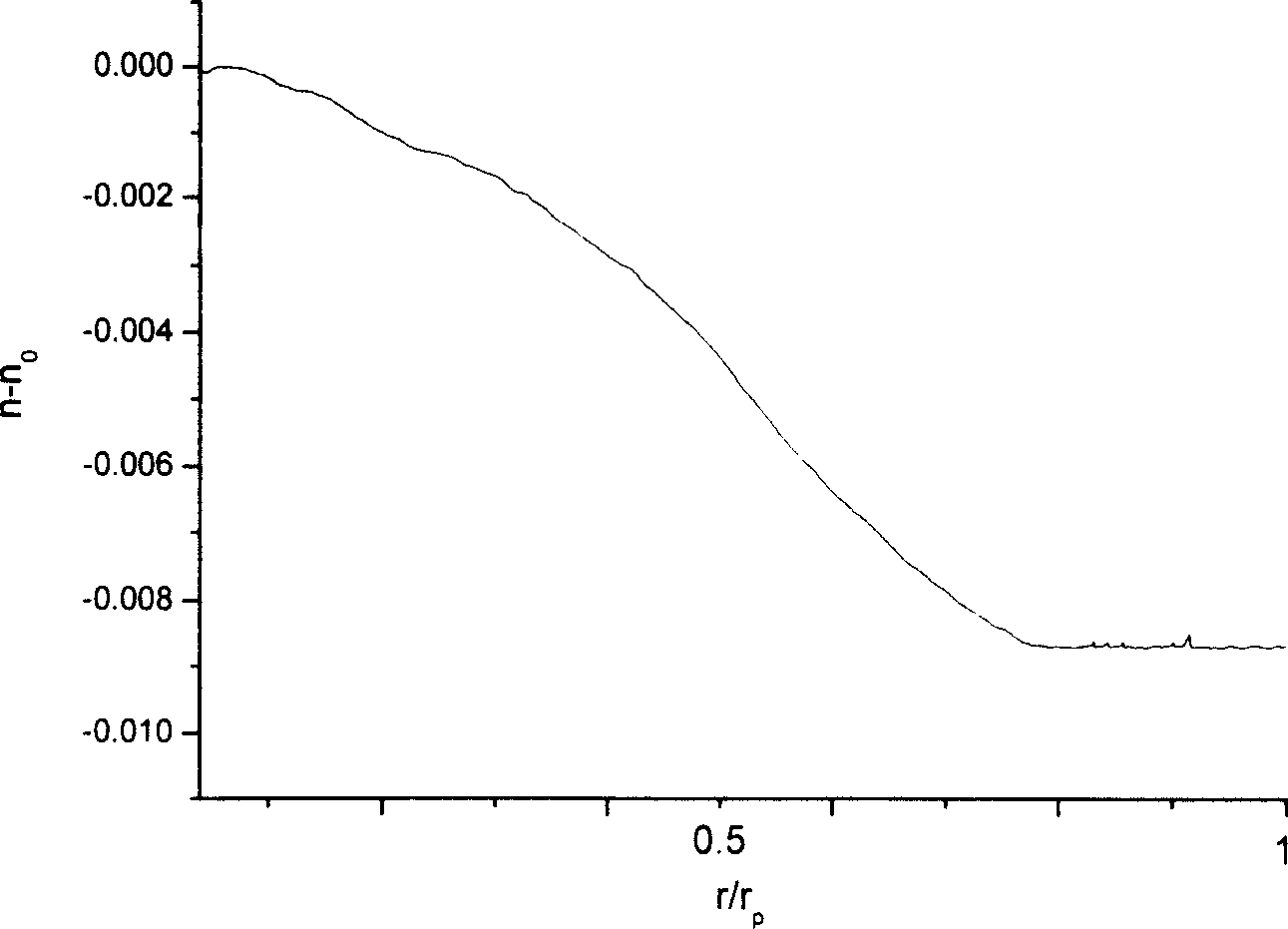Fluorine containing optical plastic perform-rod with gradient refractive index, preparing process and usage thereof
A gradient refractive index and preform technology, which is applied in the field of fluorine-containing gradient refractive index optical plastic preforms, can solve the problems of low working temperature, high cost, and reduced polymer stability.
- Summary
- Abstract
- Description
- Claims
- Application Information
AI Technical Summary
Problems solved by technology
Method used
Image
Examples
Embodiment 1
[0029] Add 4 grams of hexafluorobutyl methacrylate containing 0.3% AIBN into a sealed tube with a length of about 15 cm and a diameter of 14 mm. Freeze-drying, evacuation, and nitrogen filling were repeated three times to seal the sealed tube. The sealed tube was placed horizontally and rotated, and reacted at 60°C for 72 hours. A polymerized hollow tube is obtained. The spout was cut and 12 grams of a solution of 0.3% BPO and 5% benzyl benzoate in hexafluorobutyl methacrylate was added. Stand vertically for 2 hours, heat up to 60°C, cool to room temperature after 1 hour, then react at 60°C for 72 hours, and continue to react at 80°C and 100°C for 24 hours each. After the reaction is finished, it is cooled in a refrigerator, and the outer glass is removed to obtain a transparent preform. The refractive index of the fluorine-containing gradient index optical plastic preform of the preform is as follows figure 1 As shown,.
Embodiment 2
[0031] Add 8 g of tetrafluoropropyl methacrylate containing 0.3% AIBN to a sealed tube with a length of 15 cm and a diameter of 14 mm to freeze-dry, vacuumize and fill with nitrogen three times to seal the tube. The sealed tube was placed horizontally and centrifuged, and reacted at 67°C for 48 hours. A polymerized hollow tube is obtained. The nozzle of the tube was cut and 8 g of tetrafluoropropyl methacrylate solution containing 0.3% BPO and 8% bromobenzene was added. Stand vertically for 1 hour, heat up to 60°C, cool to room temperature after 1 hour, then continue to react at 67°C for 72 hours, and continue to react at 80°C and 100°C for 48 hours respectively. After the reaction is finished, it is cooled in a refrigerator, and the outer glass is removed to obtain a transparent preform.
Embodiment 3
[0033] Add 96 grams of trifluoroethyl methacrylate containing 0.3% BPO into a sealed tube with a length of 60 cm and a diameter of 28 mm to freeze-dry, vacuumize and fill with nitrogen three times to seal the tube. The sealed tube was placed horizontally in a high-speed centrifuge, and reacted at 65°C for 72 hours. A polymerized hollow tube is obtained. The nozzle was cut open and 36 grams of a solution of 0.3% BPO and 10% biphenyl in tetrafluoropropyl methacrylate was added. Stand vertically for 0.5 hours, raise the temperature to 60°C, cool to room temperature after 1 hour, then continue to react at 67°C for 55 hours, and continue to react at 80°C and 100°C for 24 hours each. After the reaction is finished, it is cooled in a refrigerator, and the outer glass is removed to obtain a transparent preform.
PUM
 Login to View More
Login to View More Abstract
Description
Claims
Application Information
 Login to View More
Login to View More - R&D
- Intellectual Property
- Life Sciences
- Materials
- Tech Scout
- Unparalleled Data Quality
- Higher Quality Content
- 60% Fewer Hallucinations
Browse by: Latest US Patents, China's latest patents, Technical Efficacy Thesaurus, Application Domain, Technology Topic, Popular Technical Reports.
© 2025 PatSnap. All rights reserved.Legal|Privacy policy|Modern Slavery Act Transparency Statement|Sitemap|About US| Contact US: help@patsnap.com

